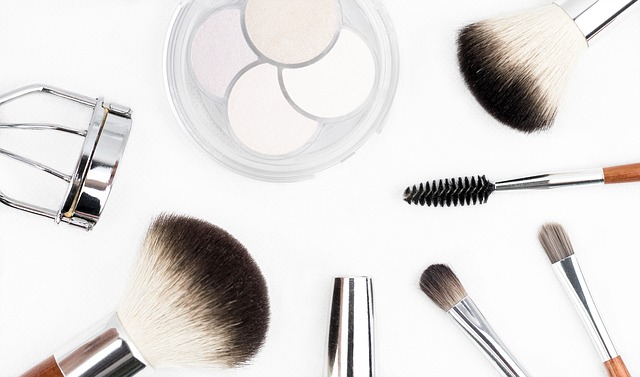The Differences Between Movie and Theatre Makeup

Even though much of a production’s success is often attributed to things like special effects, set design, and costume, its impact on the audience is equally reliant on the makeup applications onto the actors. While makeup is vitally important to the overall experience, some of what goes into putting together successful theatre production makeup differs from television or film production makeup.
As an aspiring makeup artist, you’ll inevitably be tasked with the responsibility of applying makeup for both stage and screen. With that said, you’ll need to understand the differences between the two before you can apply the correct technique. Let’s examine some of the key differences of which you should be aware.
The Key Differences
If you’ve enrolled in a movie makeup school or theatrical makeup school, you will learn at length the key differences between the two different makeup applications we’re discussing here. Consider the information presented here as a primer for the more in-depth knowledge that you will learn at the academic institution of your choosing.
One of the more obvious differences between a theatre and film makeup application is that stage makeup is typically applied much more heavily. This is so that audience members sitting further away can still see the makeup application and so that they won’t miss out on any of the visual nuances of the play. This is why stronger colours are often used to aid with visibility at a distance.
Screen makeup needs to be applied much more subtly due to the closeness of the shots. Screen makeup is generally applied to appear organic and natural as opposed to the embellishment that can be seen on stage. When in front of a camera, the makeup application needs to cover any imperfections on the actor’s face as well as emphasize or age features as necessary.
Stage Makeup Considerations
Many of the differences associated with the different types of makeup applications can be found in the application process itself. Let’s begin by taking a quick look at a general stage makeup application.
- Before any makeup is applied, the actor must first thoroughly cleanse their face taking extra care to exfoliate.
- A layer of foundation is then applied; the tone used must match and even out the actor’s skin tone.
- Using a sponge or foundation brush, apply the base layer of makeup to create a more even coverage.
- Remember that stage lighting can be quite intense, and can flatten out an actor’s features. You’ll need to add contour, character, and add definition to the face by applying a darker cream.
- You can limit the plumpness or roundness of the actor’s face by applying makeup from the actor’s chin to bottom edge of either side of their jaw.
- If the actor needs to appear wide-eyed or surprised, add pale highlight creams to the center of the eyelids and brow.
- To help the actor’s eyes stand out, apply a thin, firm line above the upper lashes and add a thinner line below the lower lashes. You can also draw a natural brow with a firm arch.
- Create emphasis within the eye sockets by applying varying levels of shadow, as required.
- When it comes to the mouth, line it with a firm, dark line that will enhance the natural shape of the mouth.
- Lastly, powder the entire face thoroughly.
Screen Makeup Considerations
As you might expect, there are generally fewer steps involved when applying a screen makeup since most of the time, the idea is to provide the actor with a natural organic look as opposed to ensuring their features can be seen from afar, or stand up against intense lighting. Of course, this isn’t a universal truth; the complexity of the makeup application, whether for stage or screen will depend on the desired look. Here’s what you can expect during a typical screen makeup application:
- The actor must thoroughly cleanse their face before the makeup can be applied, then apply a serum or moisturizer, such as Olay or L’Oreal.
- Then next step is similar to stage makeup; a foundation layer that matches and blends the existing skin tone must be applied.
- The brows must then be defined (following the natural shape) by using short strokes that mirror hair follicles.
- If you need to apply “warmth” to the actor’s face, you can apply a subtle brown or bronze coloured eyeshadow.
- To avoid smudging liners, use a gel liner instead of a pencil liner.
- Apply one or more coats of mascara and add individual lashes to the outside corners of the eyes.
- Blend blush on the apples of the cheeks into the foundation.
- Lastly, apply a powder to the entire face to set the makeup.
Technique!
As a makeup artist, you need to have several skills in your repertoire in order to apply the correct technique. While these skills will be taught in depth at a stage makeup or cinema makeup school, it is important to understand the fundamental differences between the two. If you have an interest in a career in makeup artistry, be sure to check out CMU College of Makeup Art & Design for a host of makeup application and beauty courses.

